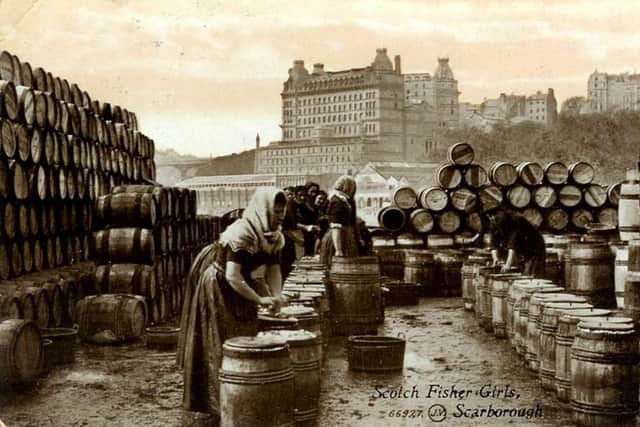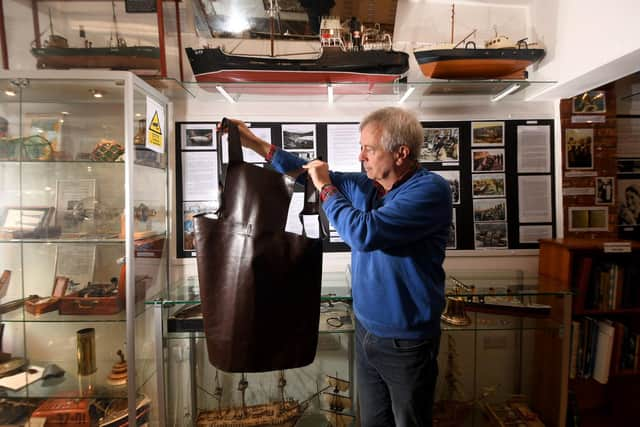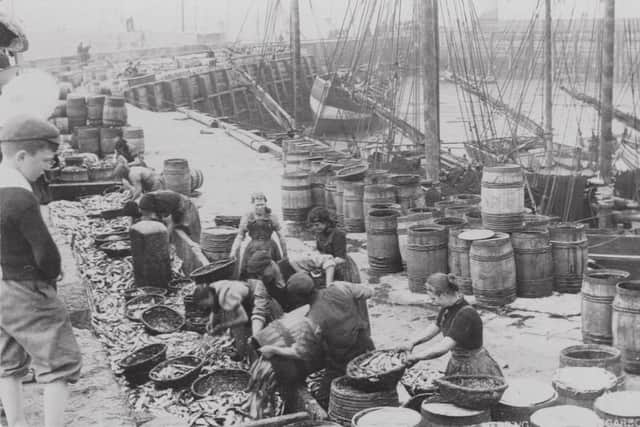The story of Scarborough's Herring Girls who came to Yorkshire to gut fish
On the boards at Scarborough harbour there is little symbol of the history here. Once, it would have been where the strange herring girls worked their magic.
They were so fast it was said they could gut a fish in the space of a single second, as crowds would gather to watch. Among the genteel members of Victorian society, this was to serve as a show.
Advertisement
Hide AdAdvertisement
Hide AdFor the girls, so removed from their homes in the islands and highlands of Scotland, it was relentless work whatever the weather. They had to be hardy and strong.


It can be easy to picture them now; elbow deep in the muck and the grind. Laughing gaily as they chatter in Gaelic, that strong bond in being so far from home.
Their tale today might often be told with the reminiscence of rose-tinted glasses, but the truth may be more tangled than that of a great romance.
To Stewart MacDonald, local historian and author of Scarborough at War, theirs is a forgotten story. Of friendship, adventure, and the bold role that women played in the fishing history of Britain.
Advertisement
Hide AdAdvertisement
Hide AdAs a new exhibition opens at Scarborough Maritime Heritage Centre, it delves deeper into Yorkshire’s herring girls heritage, with recordings of their song.


There’s young Margaret Thompson, whose friends stood in as family to bury her at the age of just 21, and the lodging girls - Agnes Reid, Jessie Hay and Mary Hay - of Parkin Lane.
Each old photograph shows a story, of the strong bonds that grew between them.
“It was just a tremendous adventure for these young women,” said Mr MacDonald. “They were travelling to the end of the universe, in a way, from the highlands of Scotland to a coastal resort in Yorkshire. It’s a forgotten part of Yorkshire’s tourism history.
Advertisement
Hide AdAdvertisement
Hide Ad“For most of them, it was their first time away from home. They were almost an alien group of people, arriving in Scarborough, from such different backgrounds.”


The herring girls, or ‘fisher lasses’, were Scottish women who became a regular feature of east coast fishing ports in the 19th and early 20th centuries.
They arrived in Scarborough in large numbers, lodging three-in-a-bed in modest family homes, or in tourist accommodation as the season drew to a close.
They tended to be quite religious, said Mr MacDonald, having lived traditional lives in the Scottish highlands and Hebrides, centred around fishing and farming and marriage.
Advertisement
Hide AdAdvertisement
Hide Ad“They came from fairly impoverished areas, where their families found it more or less impossible to survive without their income,” he said.
“They tended to be very hard working, pretty tough and strong and Gaelic speaking. At the same time, they had a reputation for being very good fun as well.
“They could be quite intimidating - they came in such large groups - and would spend time teasing local men and fishermen. If not at work, they were knitting, wasting no time at all.”
At work the herring girls would draw great crowds of holiday-makers to watch, as they wielded special knives or ‘futtles’ to gut three-dozen fish a minute at lightning speed.
Advertisement
Hide AdAdvertisement
Hide AdThey were mostly paid by the barrel, meaning they worked long days and braved the elements. And their lives have captivated observers. The exhibition draws on examples from paintings, newsreels and features including one from the New York Times in 1937.
Suffragette and socialist campaigner Sylvia Pankhurst was among those to visit Scarborough in 1907 to investigate - and to paint - the working conditions of the herring girls.
What impressed her, said Mr MacDonald, was the way the girls - and many were actually middle-aged women - looked out for each other.
“She felt they actually made good money,” he said. “This was only because they could work at such speed - and with such long hours as well.
Advertisement
Hide AdAdvertisement
Hide Ad“There has been a lot of romanticism, around the lives of the girls. She saw them in a positive light compared to those in the factories and mills at the time.
“She liked the solidarity, they all looked after one another. Together, they could be quite an intimidating presence in Scarborough.”
Still today, an attractive headstone remembers Margaret Thompson who died in 1910 after a short illness aged 21. In death, it was her fellow workers who stood in for her family to pay for an inscription headstone “to mark the spot where she rests alone”.
“As an industry it was hard,” said Mr MacDonald. “They were working away from home, in a strange place with a strange language. They made big sacrifices, and a big contribution.
Advertisement
Hide AdAdvertisement
Hide Ad“The herring industry was one of the major exports of Britain at the time. Women had a key role to play. That has been forgotten.”
Herring Girls, at Scarborough Maritime Heritage Centre, runs until the end of August.